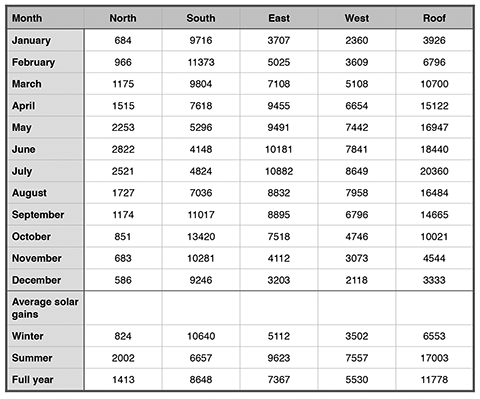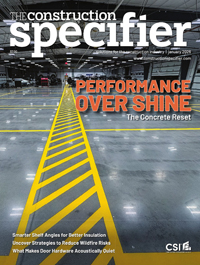Managing daylighting with shading


From both the tabulated data and the graph, the varying impact of sun on the glazing can be seen. For the same area of glazing, during the summer, the incident solar radiation through a horizontal skylight is between two and three times higher than through vertical glazing.
The light levels inside the building also vary significantly depending on the glazing’s orientation, time of day, and day of the year. It is not as easy to undertake a comparison as is the case with direct solar gains. Figure 8, however, shows floor plans demonstrating the light levels at noon on June 21 for a space with south-facing glazing and one with a skylight. Both areas of glazing are the same. As can be clearly seen, using a skylight results in substantially higher light levels inside the space. In principle, this is good—but there is a risk of glare if this natural light is not effectively managed.

From the brief analysis, it is evident skylights can be a useful way of providing an abundant amount of natural daylight—particularly if above a central atrium—but they can also cause glare and major heat gain issues. However, when the solar gain through the glazing is controlled by a shading system, light levels can be moderated as required, and excessive heat gain can be mitigated, reducing the required HVAC system’s size. On the other hand, if the building has a heating requirement in the winter, certain shading systems can be retracted or alternatively set to a position to allow in free solar gains.
Fabric systems
When considering skylight shading, the standard approach is to use a fabric system. Possible options include fixed fabric panels and suspended elements like kites or retractable fabric tension systems. Fixed panels have the benefit of being relatively low in cost and maintenance-free. Since they remain permanently in place, light levels will be reduced on cloudy days and at times when there is no sun. Rather than installing the panels directly underneath the glazing, they can be set some distance below to allow more light into the space.
Kites are also fixed elements, but can be a decorative feature in addition to providing shade. Kites will always be a compromise in as much as they only provide partial shading and significant amounts of sun penetration will occur. As a result, these systems can be ideal for public spaces, but may not be appropriate in working environments where more responsive light control is required.
Fabric tension systems offer the benefit of being able to be deployed when required, but retracted when there is no sun on the glazing. Additionally, versions of these systems can be installed either internally or externally. An exterior system provides additional solar control compared with an interior one, dealing with a large part of the solar energy before it comes through the glazing and into the building.
Fabric tension systems have a drive tube—normally housing a motor, although manually operated system can be used in some situations—onto which the fabric panel is installed, as well as a mechanism to provide tension to the deployed fabric. Springs are the most common method of achieving the required tension, but opposed synchronized motors are sometimes used as an alternative. Spring systems can have a separate spring tube or alternatively, a single tube incorporating both the motor and the spring tension mechanism.
Not all shading fabrics can be used under tension; most polyester-based products are insufficiently stable and will stretch. As a result, fabrics with a core glass fiber yarn are mostly used, although one polyvinyl chloride (PVC) polyester fabric works extremely well due to the way it is produced, which means it is stable under tension. The range of fabrics for exterior systems is not as great as is the case for interior ones—they do, however, use the same materials and have similar weave structures, but the base yarns are thicker.






